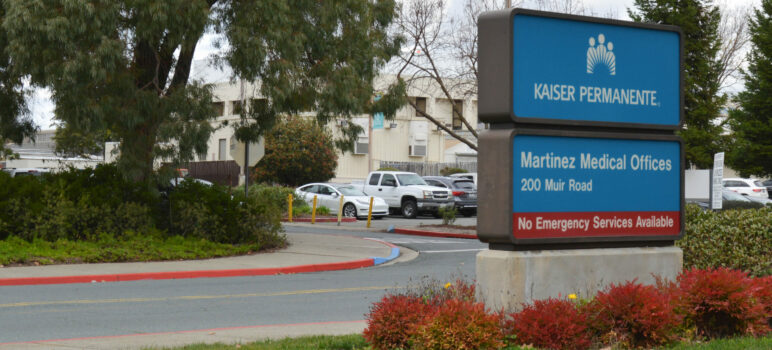State and local officials urged Bay Area residents Wednesday to sign up for health insurance coverage through the state’s health insurance marketplace by Friday to benefit from lower premiums.
More than 450,000 residents across the Bay Area, including more than 103,000 who are uninsured, are eligible for lower health care premiums if they sign up for insurance through Covered California by the end of the week, according to state officials.
The reduced costs are the result of federal tax credits included in the American Rescue Plan, the pandemic relief package Congress passed last month.
“I think this is a golden opportunity to take advantage of additional subsidies that the Rescue Plan will include but also some subsidies the state of California has invested in,” La Clinica de La Raza CEO Jane Garcia said Wednesday in a virtual briefing. “I think this is a golden opportunity to get covered and to catch up.”
The tax credits in the relief package are also expected to lower premiums by an average of $180 per month for roughly 280,000 Bay Area residents who already get insurance through Covered California, which the state formed under the Affordable Care Act, former President Barack Obama’s health care law.
Those savings will automatically be applied to existing customers’ accounts, according to Covered California officials.
State officials expect the tax credits will save state residents more than $3 billion in total through the end of 2022, when they are set to expire.
“The new and expanded financial help provided by the American Rescue Plan can help people throughout the Bay Area get covered and stay covered by lowering their premiums and putting money back into their pockets,” Covered California executive director Peter Lee said in a statement. “The American Rescue Plan provides the most significant consumer cost savings since the Affordable Care Act began, but in order for many people to make the most of that savings, they need to act before the month ends.”
Residents can visit coveredca.com or contact Covered California at 800.300.1506 for information on signing up for health care coverage.


Covered California and the Affordable Care Act, simply put, ask people to buy health insurance from a small number of private health insurance companies. The reason there a small number of such companies is due to the highly concentrated nature of that market, a result of mergers and acquisitions and the failure of the government to enforce ant-trust, anti-monopoly laws in that industry. (In Santa Clara County in 2020, there were four private companies–Anthem Blue Cross, Blue Shield, Kaiser and Valley Health Plan. See page 37 of https://hbex.coveredca.com/insurance-companies/PDFs/2020_rate_booklet_final.pdf).
As someone who has purchased health insurance coverage through Covered California since its establishment in 2014, I can attest that there is virtually no difference in the premium costs as between one insurer and another. Each year, I review them and there is very little to no difference between the plans. I can also attest that the premiums have increased every single year, the fundamental reason being the monopoly pricing that results from the high market concentration (monopolization) that allows the few companies to essentially set the premiums (prices) they want.
The federal government, rather than using its considerable power to negotiate premiums with these insurance companies on behalf of the buyers in the exchanges, or just force the companies to lower premiums, allows the insurance companies to freely set prices. To make the insurance plans somewhat affordable, the federal government instead pays part of the premiums set by those monopoly companies on behalf of lower to middle income people who buy their insurance through Covered California (or Obamacare generally). In paying for an increasing share of the monopoly-priced premiums–as noted in the above article–the government, in effect, encourages the companies to raise premiums, something they have done consistently since 2014.
Whether individuals or households shoulder 100% of the set premium costs, or whether they pay only 20% of those premiums with the government (taxpayers, actually) paying the other 80%, private health insurance companies receive the whole premium (price) they have set. In general, this is the most costly and wasteful type of health insurance in the entire U.S. healthcare system. Private insurance companies are in the business to earn profits for their owners. Profits add a layer of unneccesary costs for insurance buyers, in this case households and taxpayers. More ominous is the common practice of private insurance companies to challenge claims and/or deny coverage for patients seeking care. While this boosts their profits–as they pay out less for each dollar of premiums they bring in–the results for patients are sometimes deadly and oftentimes debilitating.
As nearly all experts in the field know, the least costly, most efficacious type of health care insurance is a publicly-financed, single payer system. Expanding and improving the existing Medicare system to cover everyone for all necessary services would save an estimated 68,000 lives in the U.S. each year, extend lives at a rate of 1.7 million life-years each year and save nearly a half-trillion dollars ($450,000,000,000) each year relative to our current system. More than 90 percent of U.S. households and businesses would see significant health cost savings under such a rational public plan (see https://www.thelancet.com/action/showPdf?pii=S0140-6736%2819%2933019-3).
Any expert not on the payroll, or under the influence of, private insurers, hospitals or drug companies will tell you that improved and expanded Medicare is the least costly and most equitable solution for the millions of Americans struggling with inadequate health care coverage and its unbearable costs (https://www.thelancet.com/journals/lancet/article/PIIS0140-6736(19)33019-3/fulltext; https://journals.plos.org/plosmedicine/article?id=10.1371/journal.pmed.1003013).